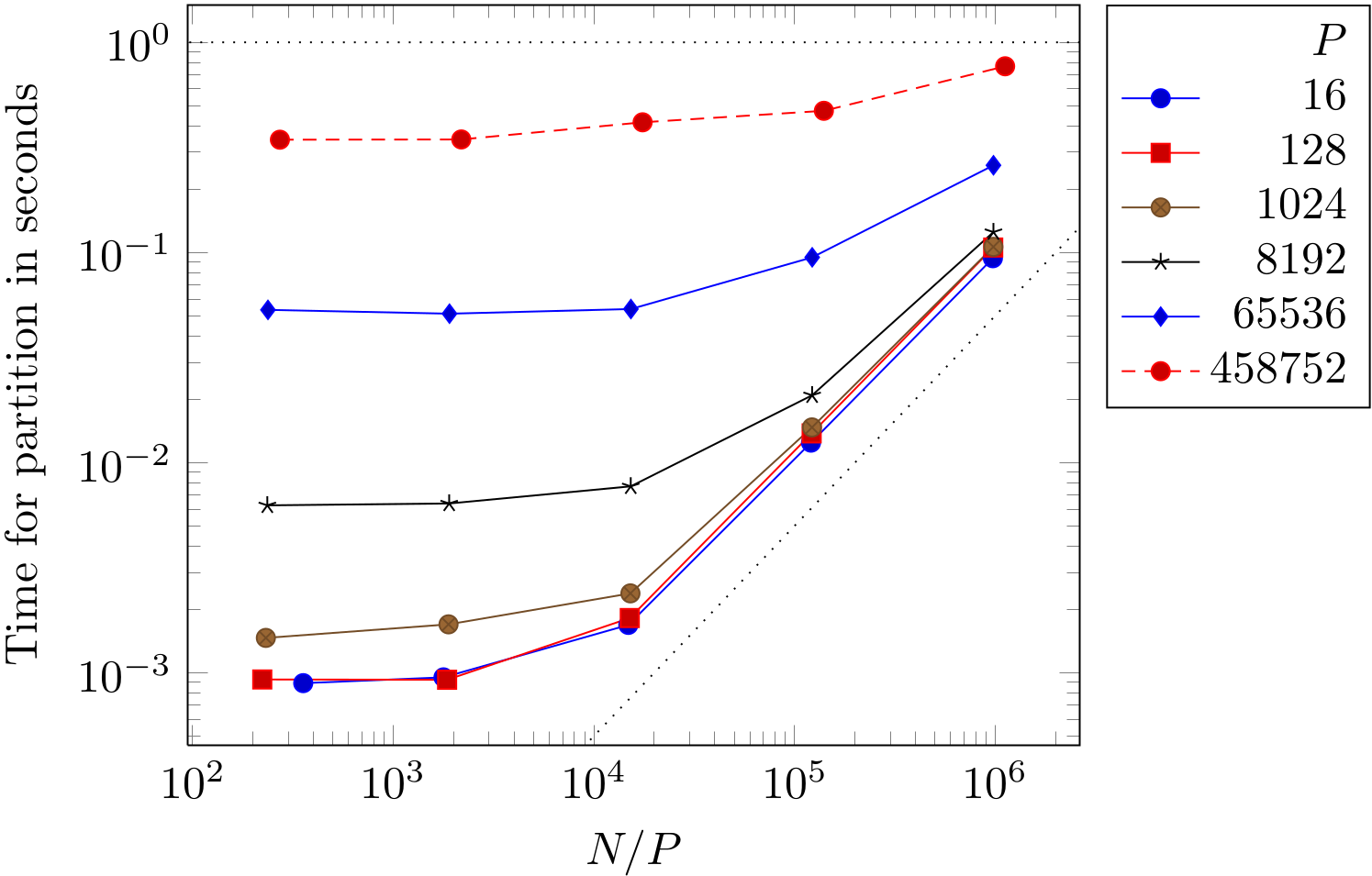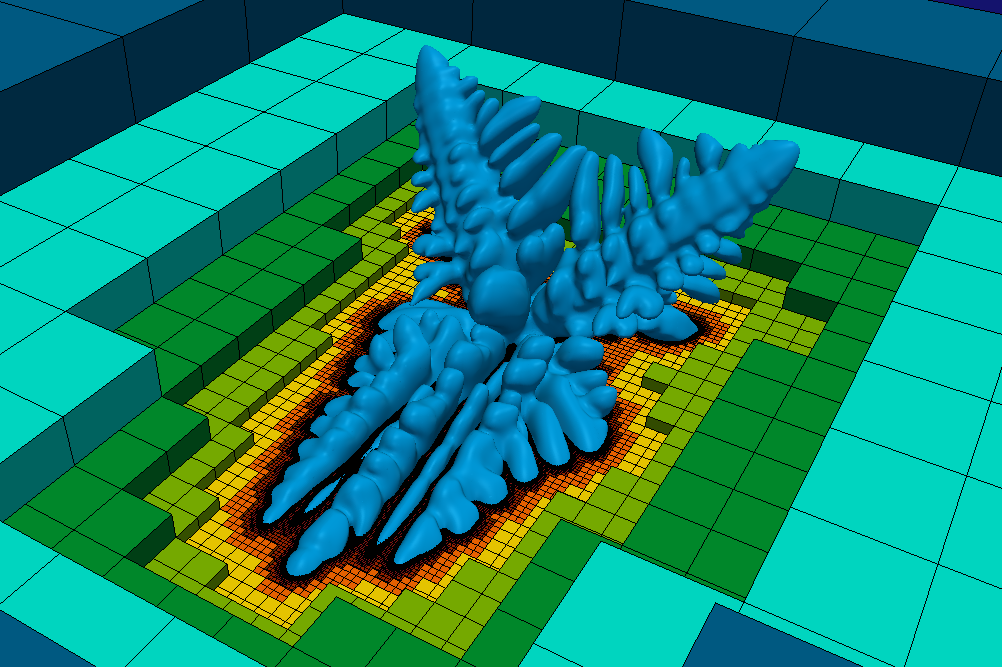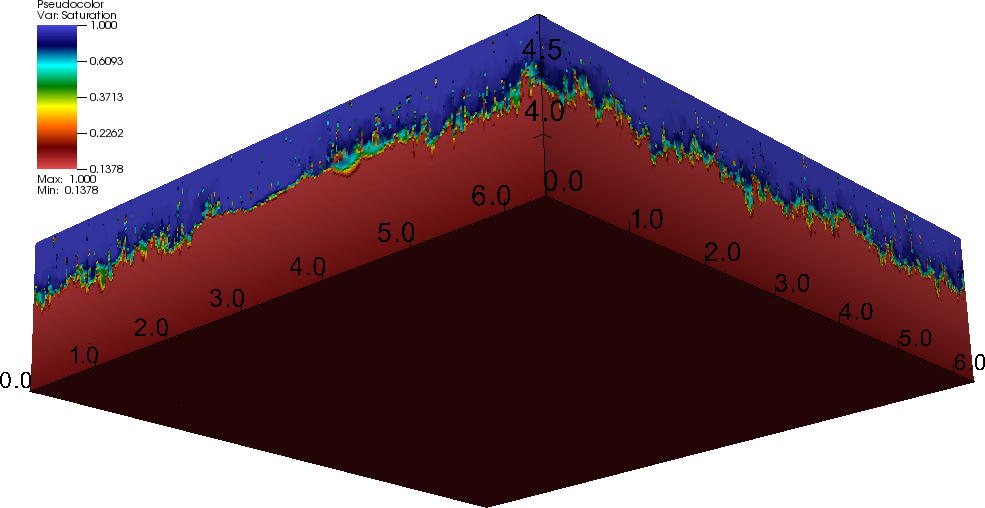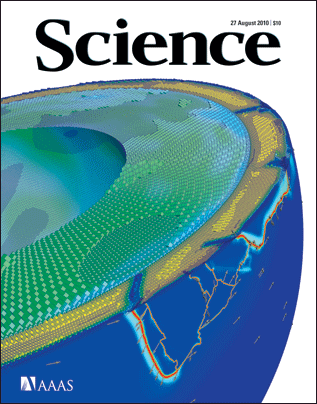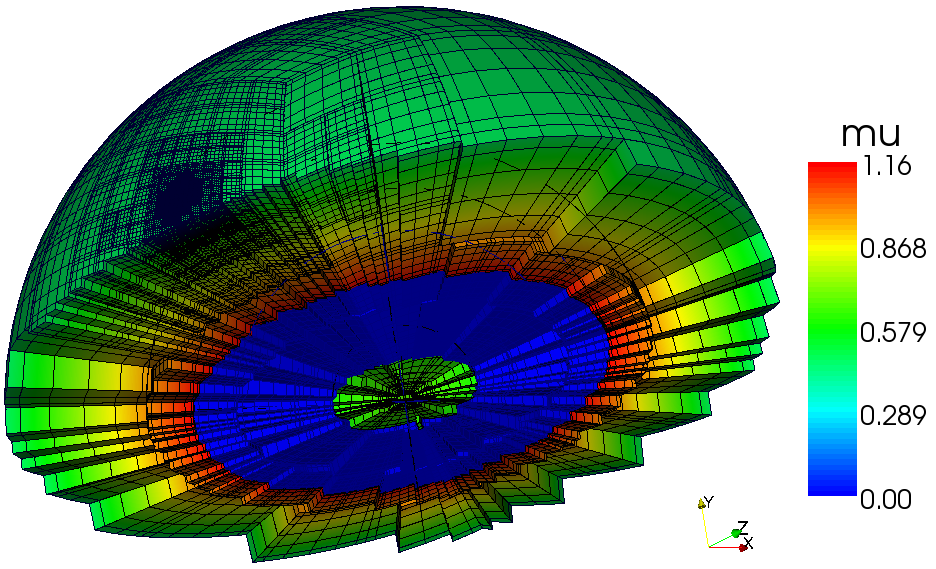Research Group of Prof. Dr. Carsten Burstedde
Research Profile
Scalable algorithms for adaptive mesh refinement
Many physical systems exhibit multiscale phenomena that lend themselves to simulations using adaptive mesh refinement (AMR). On large parallel computers however, and in particular for problems that require frequent refinement, coarsening, and repartitioning of the mesh, it is a challenge to perform such mesh operations efficiently. I am working extensively on the forest-of-octrees approach, designing new parallel algorithms for parallel AMR that scale to the largest supercomputers available. These are implemented in the p4est software library that is available under the GNU GPL version 2 (or later). p4est is used as parallel mesh infrastructure for a number of large-scale simulation projects; see my publications page and my profile on Google Scholar for more details.
To solve hyperbolic conservation laws using parallel adaptive mesh refinement on two-dimensional manifolds, I am working on the ForestClaw project lead by Donna Calhoun. One goal is to simulate the transport of volcanic ash through earth’s atmosphere.
In joint work with my graduate student Johannes Holke, we are developing scalable algorithms for AMR on hybrid meshes. Johannes has designed a new space filling curve for tetrahedra, and we are working on generalized and progressively optimized parallel algorithms for AMR.
Scientific computing and applied mathematics
My main motivation for researching scalable dynamic AMR is the discretization and numerical solution of partial differential equations (PDEs). I develop finite element and discontinuous Galerkin approaches for various elliptic, nonlinear parabolic and hyperbolic systems of PDEs with a focus on non-conforming meshes and parallel solvers.
In cooperation with geophysicists and engineers I am working on science problems, such as the simulation of crystal growth, of subsurface flow (with my graduate student Jose A. Fonseca within the DFG TR 32 project D8), thermal convection in the earth’s mantle, and global scale seismic wave propagation. For all of these applications, high performance computing using AMR is essential to achieve the resolution necessary to capture important physical phenomena.
A related field of interest are Newton-Krylov methods for ill-posed inverse problems with applications in full waveform inversion for seismology and uncertainty quantification in the simulation of ice sheets.

